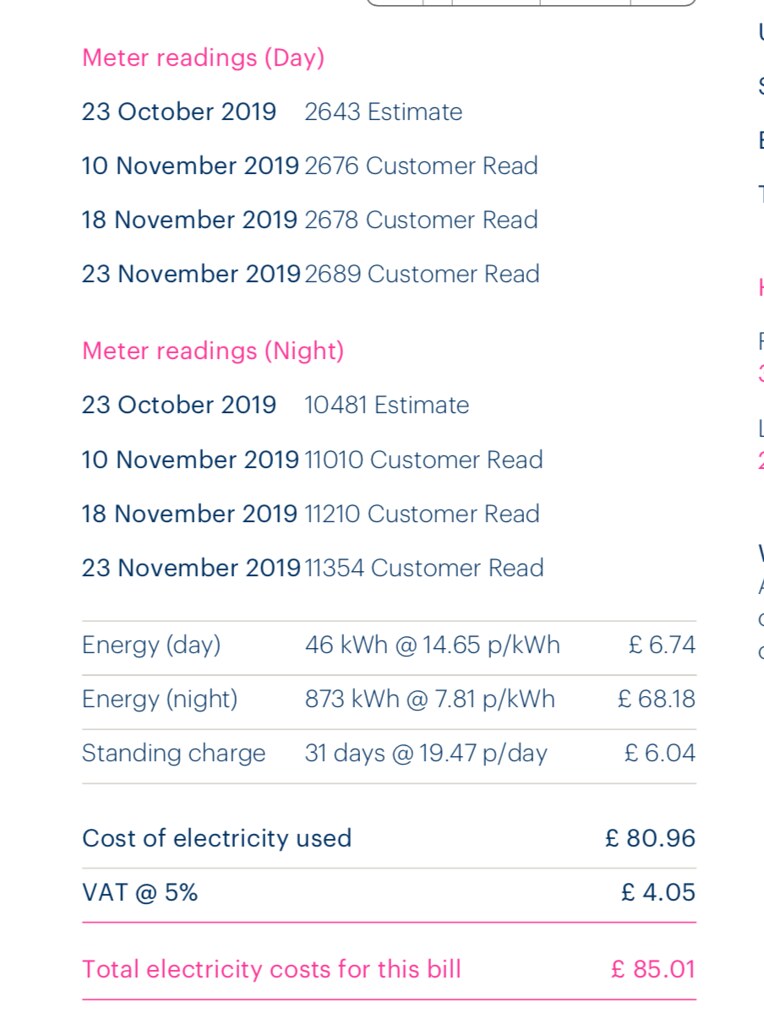Developing my point above a bit further, these tariffs are going to be about much more than just day and night and evening peak pricing. We know the difference between wholesale price for a high wind half hour metering period vs for a low wind one is growing and will become very large, and I think these tariffs are really about that.
Historically, power price fluctuations have been more about demand, hence E7, which can be on a daily schedule rather than reactive. Increasingly, it's about supply of intermittent power, so has to be reactive to that, which is predictable over a few hours or days but isn't on a daily schedule.
Utility scale load balancing plants are likely to become much bigger news soon and battery (could be EV and immersion heaters, maybe other things too, as well as expensive house batteries) equipped homes can also provide a highly reactive load balancing service in a similar way. Whatever/whoever provides this service is a really important enabler for more renewables and therefore further decarbonisation of the grid.
It's also very early days in the market for these tariffs, little competition so they'll be priced accordingly. They should come down relative to both variable and E7.
On smart meters, whether you like or loathe them some sort of technology is required to enable end users to react quickly and automatically to changes in power price, and to be charged accordingly. I'm not sure whether their unpopularity is about "big brother", shonky implementation or something else - some of these concerns can be fixed, some I guess not.
Historically, power price fluctuations have been more about demand, hence E7, which can be on a daily schedule rather than reactive. Increasingly, it's about supply of intermittent power, so has to be reactive to that, which is predictable over a few hours or days but isn't on a daily schedule.
Utility scale load balancing plants are likely to become much bigger news soon and battery (could be EV and immersion heaters, maybe other things too, as well as expensive house batteries) equipped homes can also provide a highly reactive load balancing service in a similar way. Whatever/whoever provides this service is a really important enabler for more renewables and therefore further decarbonisation of the grid.
It's also very early days in the market for these tariffs, little competition so they'll be priced accordingly. They should come down relative to both variable and E7.
On smart meters, whether you like or loathe them some sort of technology is required to enable end users to react quickly and automatically to changes in power price, and to be charged accordingly. I'm not sure whether their unpopularity is about "big brother", shonky implementation or something else - some of these concerns can be fixed, some I guess not.



